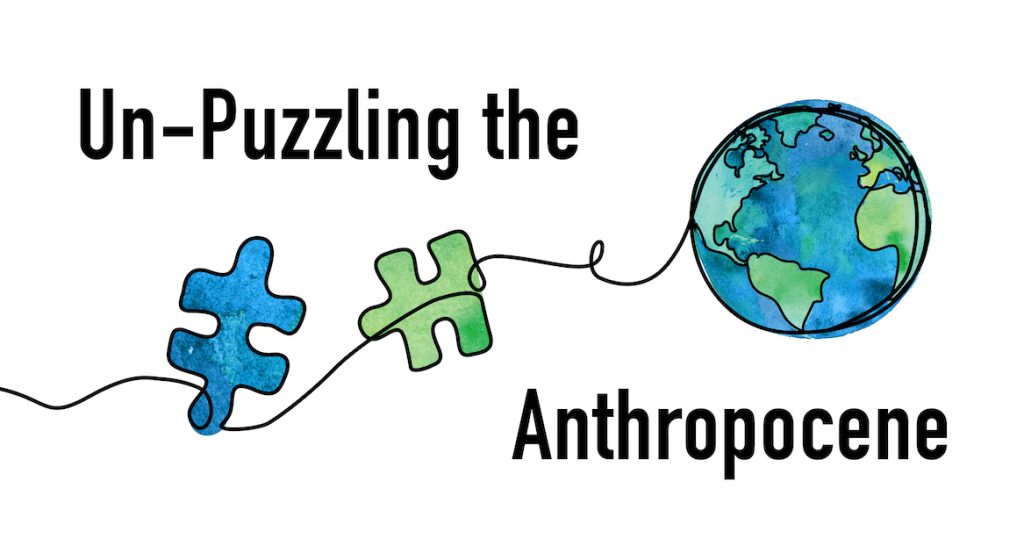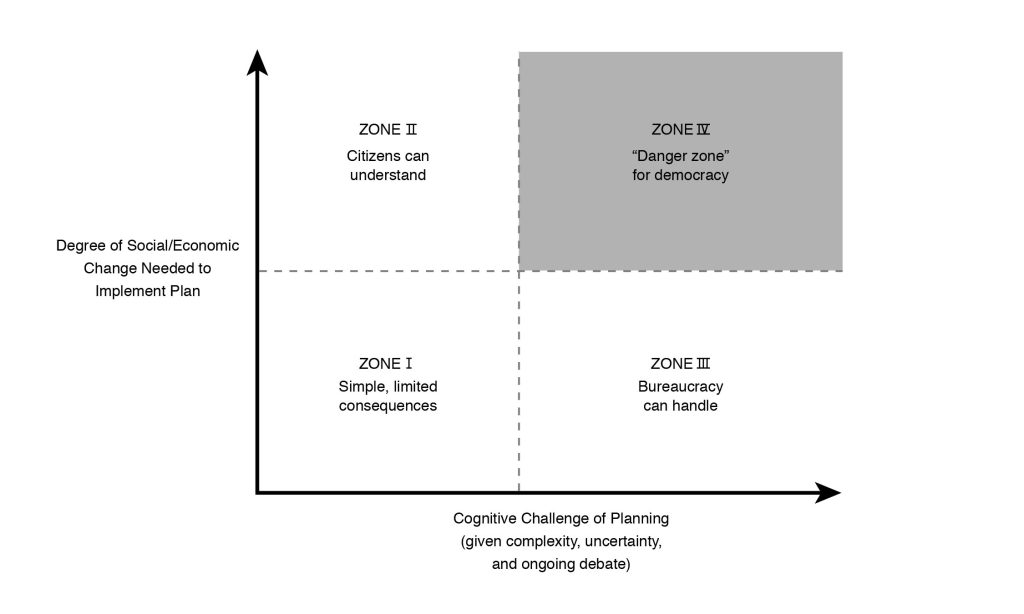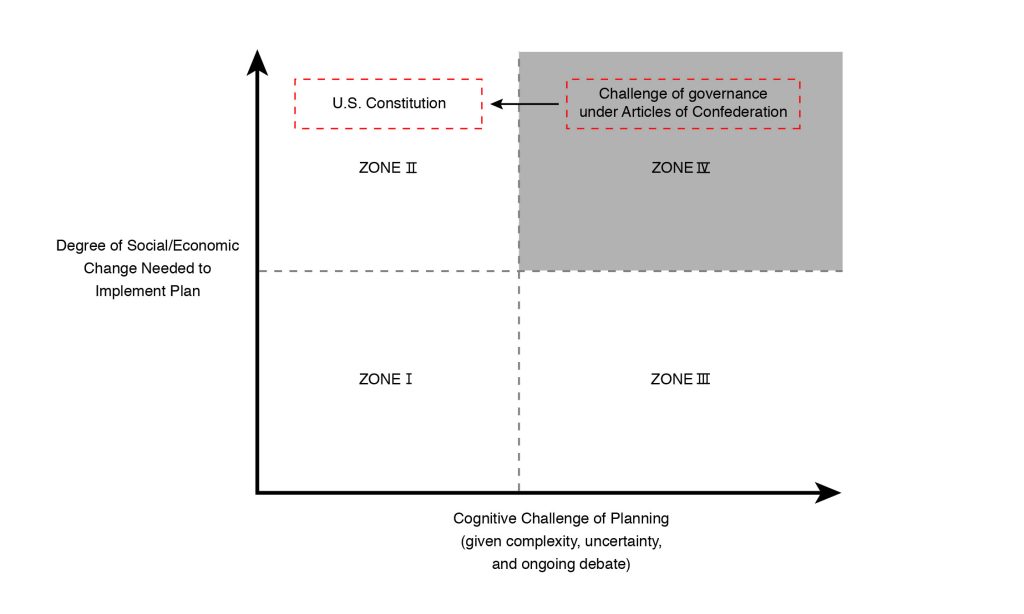Un-puzzling the Anthropocene

Society seems to get stuck when dealing with problems of the Anthropocene — problems like climate change, environmental degradation, and risks posed by the rise of artificial intelligence. There’s trouble because of a complexity that overwhelms the current problem-solving capacity of society. Despite increasing awareness of the problems/risks, and despite ongoing discussion of possible solutions, we have — as yet — no effective response to these global challenges. It’s as if society is faced with several huge jigsaw puzzles: various parts of each picture get assembled, but no one is able to finish the puzzles and devise a way to solve the problems of the Anthropocene.
At Humanity 2050, we are testing a new strategy, setting up and using “special focus teams” to help in assembling such puzzles. These teams build on existing work by other groups, but they add a new level of analysis and careful thought to help society develop effective, actionable plans to address the problems of the Anthropocene.
We recently published a white paper detailing the reasoning behind our use of these special focus teams, and we offer a brief summary here. As explained below, we had begun our inquiry by asking a few basic questions about the challenges of the Anthropocene. One by one, these answers gave clues that let us see how to develop a better puzzle-solving strategy.
Our First Question and First Clue
We started by asking: Why are problems of the Anthropocene so hard? What makes this kind of jigsaw puzzle so difficult? And we had a key insight (discussed in previous posts) as we set up the following chart and used it to sort problems facing society into four different “zones” or “bins.”

We used two key criteria as we tried to rank and sort the different types of challenges now facing society. The horizontal axis shows the cognitive challenge — increasing towards the right — involved in developing effective long-range plans (as needed to address existing or emerging problems), and the vertical axis shows the degree of social and economic change that’s likely to be required when such a plan is implemented.
Typically, democratic society does OK in Zones I, II, and III of this diagram. Thus, for example, in the U.S. we’ve decided to all drive on the right-hand side of the road (Zone I). There’s more social tension in Zone II, with passionate debate about issues like same-sex marriage and abortion rights, but society makes and amends laws and muddles through. And, likewise, society usually does OK in Zone III, with problems like those involved in the approval of new drugs or the regulation of airline traffic.
But many problems of the Anthropocene — problems like climate change and environmental degradation — fall into Zone IV. In this zone, there is immense “cognitive complexity” involved in developing an effective plan (as on the horizontal axis), and there is immense “social complexity” (vertical axis) that will arise when attempting to implement such a plan. It’s hard to get agreement when changes needed to solve these Zone IV problems will affect the lives of almost every person on the planet.
Thus, our first clue comes as we see: there’s an underlying challenge of complexity that makes it hard for society to solve any such jigsaw puzzle, let alone the entire set of puzzles posed by the Anthropocene.
Our Second Question and Second Clue
We then asked: How much progress does society (with its current capabilities) make in attempting to solve these problems of the Anthropocene? Do we at least succeed in assembling a few parts of each jigsaw puzzle?
Taking climate change as an example, we note: There are wonderful studies and reports, as with those from the Intergovernmental Panel on Climate Change. We have data about the mechanisms of climate change, information about the dangers, and ideas about how to respond. Yet there is immense technical complexity, and ideas are spread among many different minds and documents, and different groups look at the problem from radically different perspectives. Ideas — arising as altered patterns of neural activity in the minds of people all over the world — never get sorted and integrated so as to offer some clear, acceptable, actionable plan that’s powerful enough to solve the problems of climate change.

Figure 2
Thus, the second clue: There are many relevant studies, and many groups have assembled parts of these puzzles. Society thus has a good start, but ideas are not yet sorted, integrated, and assembled to give acceptable, actionable plans that would let us solve these Zone IV problems.
Our Third Question and Third Clue
Noting this tendency to get stuck partway along the problem-solving pathway (as in Figure 2) led us to ask: Are there examples in which society got further, assembling the full puzzle and thus offering effective answers to problems with a Zone IV level of complexity? And, if so, what conditions enabled this kind of breakthrough?
Our white paper has other examples, but we take the U.S. Constitutional Convention of 1787 as a case in which a team was able to press ahead like this and make such a breakthrough. As the meeting started, delegates knew that the Articles of Confederation had failed to give the central government enough power, but there was no clear consensus about what should be done.
Yet they found an effective way to work, and ideas came together: James Madison had come to the convention with a rough plan, and delegates then worked for about four months under conditions of secrecy, with almost no outside distractions (or any running daily commentary on the partially formed plans).
This focus and careful deliberation allowed amazing progress. Delegates gradually worked their way through the full complexity of the Zone IV challenge and then drafted a proposed new constitution. This, as suggested in the diagram below, left the rest of the country with a far simpler problem of “planning,” since they could benefit from the way that delegates to the Convention had done so much of the hard part of the work.
 Figure 3
Figure 3
The rest of the country still needed to decide whether to accept, reject, or modify the proposed document, but they did not need to consider the full range of options/alternatives involved in setting up a new system of governance. It was as if delegates to the Convention had transformed a Zone IV problem into a problem that had something more like a Zone II level of complexity. The rest of the country only had to ask themselves: Have the delegates assembled the puzzle in a satisfactory way? Does it seem reasonable to set up a constitution with these 4,500 words?
And thus, the third clue: if the right team of people can work together for long enough, and can deliberate under appropriate conditions, they may be able to assemble the full puzzle — delivering a clear, acceptable, actionable plan that can solve a Zone IV problem.
Combining Clues to Develop a Plan for Special Focus Teams
Thinking about these three clues, and about the various stages involved in puzzle-solving, led us to develop plans for special focus teams within Humanity 2050. Each such team will work as follows:

Figure 4
Each team (upper right side of figure) will focus on one of the major challenges of the Anthropocene. Work from many external groups (upper left side) will continue unimpeded, with special focus teams accessing this information. Thus, the new teams will be able to “stand on the shoulder of giants,” and teams will be set up so that members will have the time and the focus needed to develop a plan that is clear, acceptable, actionable, and powerful enough to address the problem at hand.
Note: We are not arguing that the people on these teams at Humanity 2050 would somehow be smarter than everyone else. The power of this strategy will come from the way in which these teams will complement and supplement existing efforts, and from the way in which these teams will — for months and years at a time — be able to concentrate on “scouting ahead” so as to find the safest possible path amidst the perils of the Anthropocene.
Testing the Idea of Special Focus Teams
As a first test case, we have set up a special focus team to look at the complex and controversial issue of climate engineering. The team considers prospects for spraying aerosols in the stratosphere (so as to deflect some small portion of the incoming sunlight and thus help to cool the earth).
Fortunately, there already is an excellent body of work exploring relevant scientific and technical aspects of climate engineering, and several groups have started to consider how such a program might be governed.
However, no one has yet developed an integrated, actionable plan for climate engineering, and our special focus team thus takes up this challenge — combining ideas about science, technology, governance, and operational strategy, and trying to foresee how the program might work over the rest of the century. True, there are risks when looking this far ahead, but having a draft version of an operational plan already has let us foresee problems that might otherwise have only arisen decades from now as “unintended consequences” or “unexpected side effects.” Some are serious enough to merit immediate attention and to force reconsideration of some of the standard assumptions about climate engineering.
* * * * * *
Over time, special focus teams will be assembled to address other challenges of the Anthropocene. This should dramatically improve the odds of finding effective solutions and thus helping to ensure a livable human future for our children and grandchildren.
Note: Readers interested in having more details about this new strategy will find them in our white paper entitled “Special Focus Teams” to Help Solve the Problems of the Anthropocene. We’d love to talk with anyone who might be interested in supporting this project or in joining one of these teams.